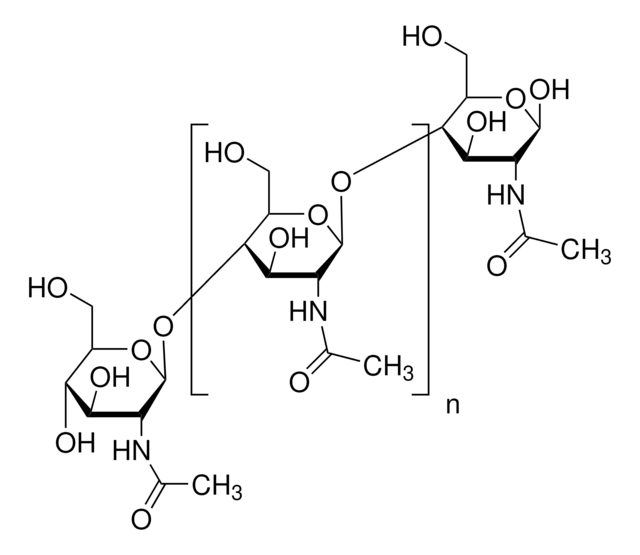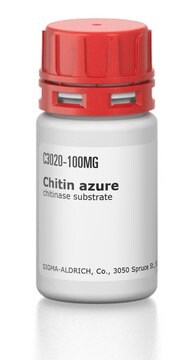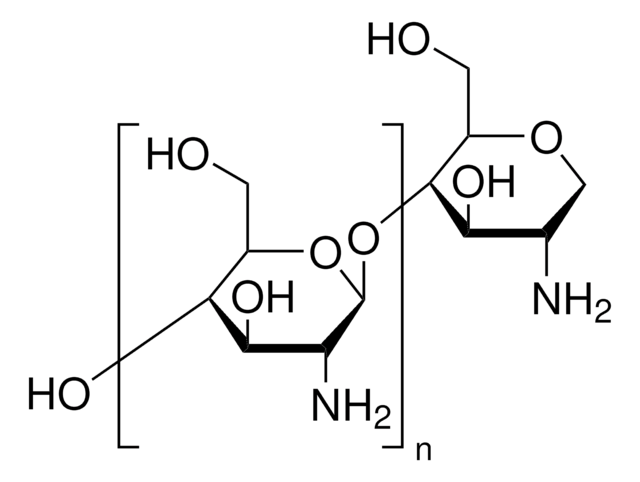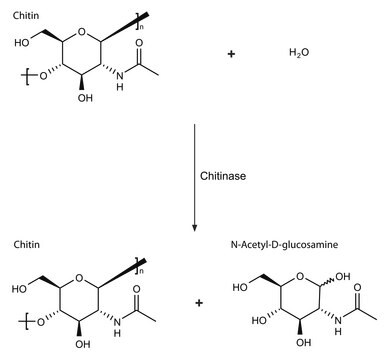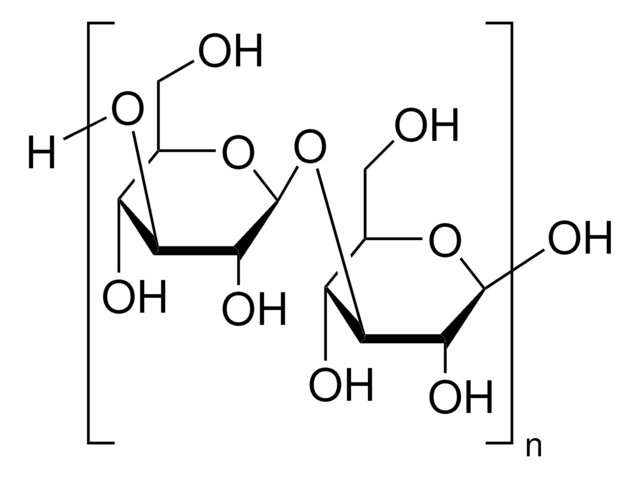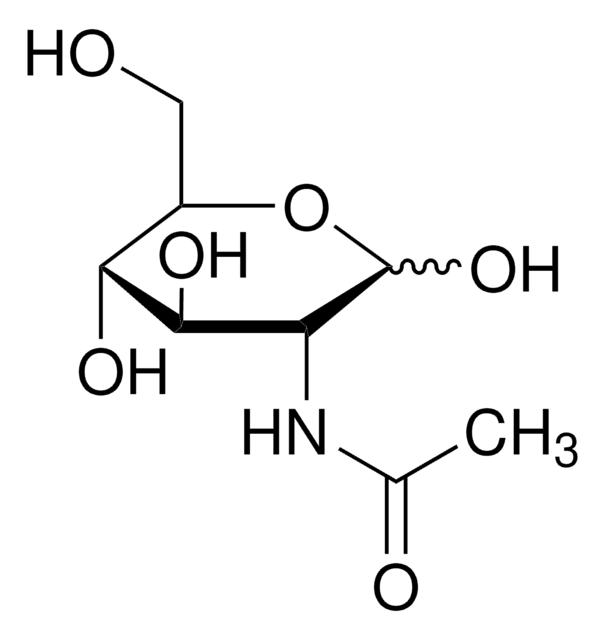C7170
Chitin from shrimp shells
practical grade, powder
Synonym(s):
Poly-(1→4)-β-N-acetyl-D-glucosamine
Sign Into View Organizational & Contract Pricing
All Photos(2)
About This Item
CAS Number:
EC Number:
MDL number:
UNSPSC Code:
12352201
PubChem Substance ID:
NACRES:
NA.25
Recommended Products
biological source
shrimp (Pandalus borealis)
Quality Level
grade
practical grade
form
powder
color
white to beige
storage temp.
room temp
SMILES string
CC(=O)N[C@@H]1[C@H](O)O[C@@H](CO)[C@H](O)[C@H]1O
InChI
1S/C8H15NO6/c1-3(11)9-5-7(13)6(12)4(2-10)15-8(5)14/h4-8,10,12-14H,2H2,1H3,(H,9,11)/t4?,5?,6?,7?,8-/m1/s1
InChI key
OVRNDRQMDRJTHS-WTZNIHQSSA-N
Looking for similar products? Visit Product Comparison Guide
Application
Chitin from shrimp shells is suitable for analysis of chitinase. It is a polysaccharide composed of N-acetyl-D-glucomasine that can also be used for the manufacture of glucosamine and chitosan.
Chitin from shrimp shells, a long-chain polymer of a β-1,4 linked N-acetylglucosamine residues, may be used to study its physicochemical properties and role in the formation of arthropod exoskeletons. It may be used to identify and characterize chitinase(s) and chitin deacetylase(s) and as a control to study the structure of chitins from other species. It may be used in chitin asthma and allergy research. Chitin may be used as a viscosity/thickening agent or binder.
Quality
Requires purification prior to use as a substrate for chitinase.
Other Notes
To gain a comprehensive understanding of our extensive range of Polysaccharides for your research, we encourage you to visit our Carbohydrates Category page.
Storage Class Code
11 - Combustible Solids
WGK
WGK 3
Flash Point(F)
Not applicable
Flash Point(C)
Not applicable
Personal Protective Equipment
dust mask type N95 (US), Eyeshields, Gloves
Choose from one of the most recent versions:
Already Own This Product?
Find documentation for the products that you have recently purchased in the Document Library.
Customers Also Viewed
Judy Gopal et al.
Scientific reports, 9(1), 13832-13832 (2019-09-27)
Chitin and chitosan are biopolymers that have diverse applications in medicine, agriculture, food, cosmetics, pharmaceuticals, wastewater treatment and textiles. With bio-origins, they easily blend with biological systems and show exemplified compatibility which is mandatory when it comes to biomedical research.
Xinxin He et al.
Marine drugs, 18(3) (2020-03-04)
Chitinase, as one of the most important extracellular enzymes in the marine environment, has great ecological and applied values. In this study, two chitinases (Chi1557 and Chi4668) with 97.33% amino acid sequences identity were individually found in Vibrio rotiferianus and
Kati Seitz et al.
International journal of molecular sciences, 21(15) (2020-08-01)
Mitogen-activated protein kinases (MAPKs) are key regulators of numerous biological processes in plants. To better understand the mechanisms by which these kinases function, high resolution measurement of MAPK activation kinetics in different biological contexts would be beneficial. One method to
Sara A Burt et al.
PloS one, 9(4), e93414-e93414 (2014-04-03)
The formation of biofilm by bacteria confers resistance to biocides and presents problems in medical and veterinary clinical settings. Here we report the effect of carvacrol, one of the major antimicrobial components of oregano oil, on the formation of biofilms
Qiang Yan et al.
Applied microbiology and biotechnology, 101(20), 7567-7578 (2017-09-09)
Microbial utilization of chitin, a potential renewable biomass feedstock, is being pursued as a means of developing novel consolidated bioprocessing for the production of chemicals. Serratia marcescens is a gram-negative bacterium that is known for its chitinolytic capability and as
Our team of scientists has experience in all areas of research including Life Science, Material Science, Chemical Synthesis, Chromatography, Analytical and many others.
Contact Technical Service